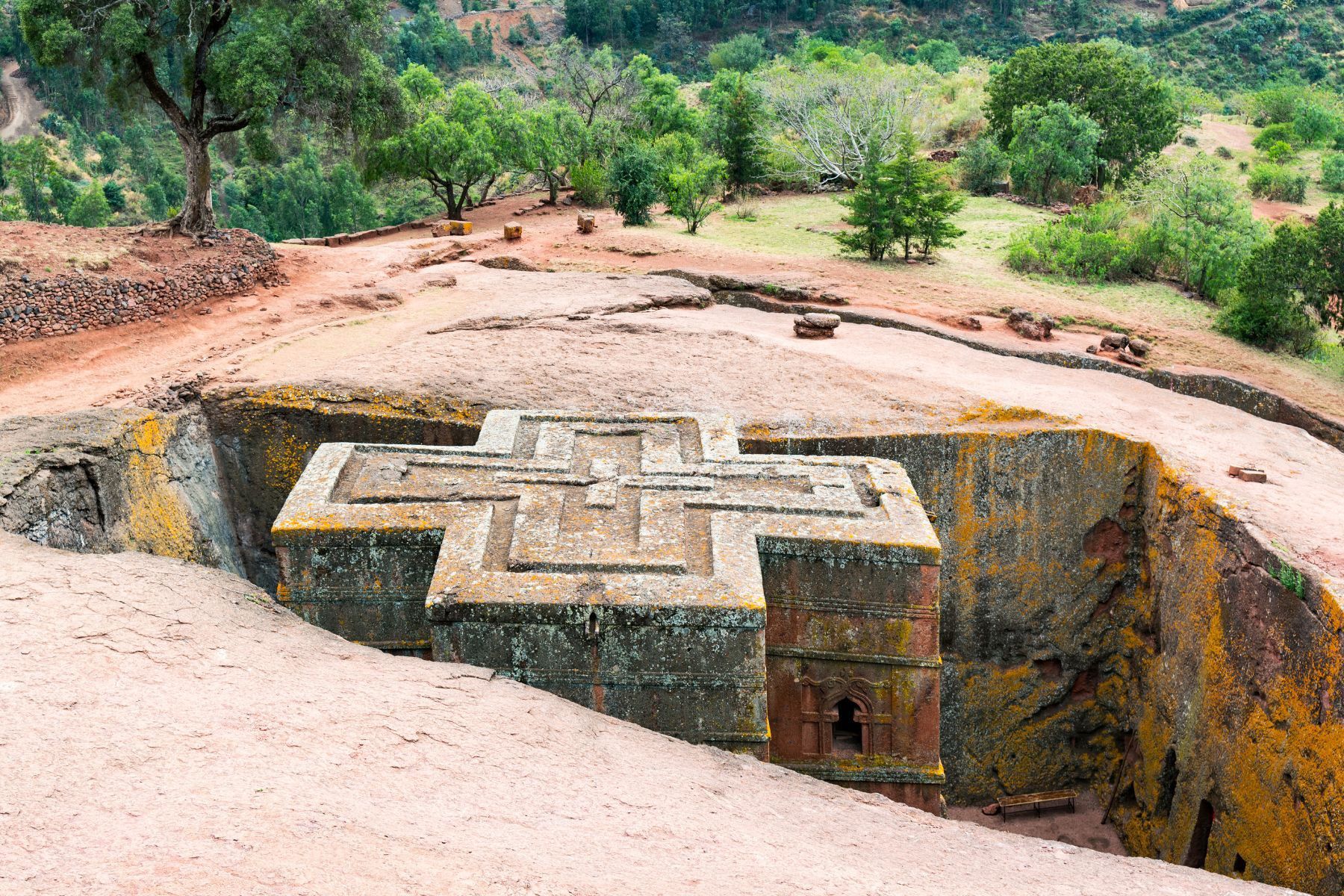
Africa is a continent steeped in spirituality, ancient wisdom, and sacred traditions.
From mystical mountains to time-worn temples, it offers travellers a deeply transformative journey—one that transcends sightseeing and ventures into soul-searching.
Whether you are seeking healing, personal growth, or spiritual connection, these five sacred places across Africa promise life-changing experiences that will leave a lasting impression.
ALSO READ: Top 10 strongest currencies in Africa in April 2025
1. Lalibela, Ethiopia – The African Jerusalem
Lalibela is one of Ethiopia’s most enchanting destinations, often considered the spiritual highlight of any journey across the country.
Located in a mountainous region approximately 645 kilometres from Addis Ababa, Lalibela is home to eleven medieval monolithic churches carved entirely from solid rock in the 12th century.
These UNESCO World Heritage Sites are not only architectural marvels but also active places of worship, where ancient Ethiopian Orthodox Christian rituals are still performed.
Pilgrims from around the globe travel to this highland town to walk in reverence and awe.
Visiting Lalibela during Genna (Ethiopian Christmas) in January is especially profound, as thousands of worshippers dressed in white robes gather to chant, pray, and celebrate through the night.
Why it changes lives: The stillness of the stone walls and the echo of centuries-old chants offer a rare spiritual quietude, reconnecting visitors to something much greater than themselves.
2. Ouidah, Benin – The Spiritual Heart of Voodoo
Situated on Benin’s Atlantic coast, Ouidah is regarded as the spiritual capital of Voodoo (Vodun)—one of Africa’s oldest and most misunderstood spiritual traditions.
Once a major slave-trading port, the town has transformed into a place of remembrance, healing, and spiritual rediscovery.
Each January, the Voodoo Festival draws thousands of devotees, dancers, drummers, and curious travellers.
From the Sacred Forest of Kpasse to the Temple of the Pythons, Ouidah offers a deeply immersive encounter with ancestral worship, divination, and a profound reverence for nature.
Why it changes lives: Engaging with indigenous spirituality and challenging long-held misconceptions allows for a deeper understanding of faith, identity, and cultural resilience.
3. Mount Kilimanjaro, Tanzania – The Roof of Africa
Towering at nearly 6,000 metres, Mount Kilimanjaro is not only Africa’s highest peak but also a deeply sacred site to the Chagga people and other East African communities.
This dormant volcano, with its snow-capped summit, is often viewed as a divine guardian watching over the land.
Climbing Kilimanjaro is far more than a physical feat; many climbers report emotional and spiritual awakenings as they ascend. The journey tests limits, fosters clarity, and instils a sense of inner peace.
Why it changes lives: The physical challenge mirrors a spiritual transformation, offering insights into endurance, self-discovery, and resilience.
4. The Great Mosque of Djenné, Mali – A Mud Marvel of Faith
A masterpiece of Sudano-Sahelian architecture, the Great Mosque of Djenné is the largest mud-brick structure in the world and a revered Islamic landmark.
Originally built in the 13th century and rebuilt in 1907, it stands in present-day Mali as a symbol of faith, scholarship, and communal harmony.
Each year, the people of Djenné unite to re-plaster the mosque with fresh mud in a vibrant festival that exemplifies devotion, tradition, and cooperation.
Why it changes lives: The mosque reveals how spiritual life and community are intrinsically linked, reminding us that faith is as much about shared action as it is about belief.
5. Osun-Osogbo Sacred Grove, Nigeria – A Sanctuary of the Divine Feminine
Located on the outskirts of Osogbo in southwestern Nigeria, the Osun-Osogbo Sacred Grove is one of the last surviving sacred forests in Yoruba culture.
It is dedicated to Osun, the goddess of fertility, love, and fresh water, revered as one of the most powerful deities in the Yoruba pantheon.
The grove is a sanctuary of shrines, sculptures, and flowing waters, and serves as a focal point of Yoruba identity and spirituality.
Every August, the Osun-Osogbo Festival celebrates the goddess with music, offerings, and ritual processions led by the Arugba, a virgin priestess.
Why it changes lives: The energy of the grove is palpable. It honours the divine feminine in her nurturing and creative power, offering healing and spiritual restoration to all who enter with reverence.
ALSO READ: Top 7 highest-paying jobs in Africa in 2025
Final Thoughts
These sacred places are far more than tourist attractions—they are living gateways to Africa’s deep spiritual heritage.
Visiting them with openness and respect can inspire profound transformation, challenge personal narratives, and reconnect you to your inner self.
Read Full Story


















Facebook
Twitter
Pinterest
Instagram
Google+
YouTube
LinkedIn
RSS